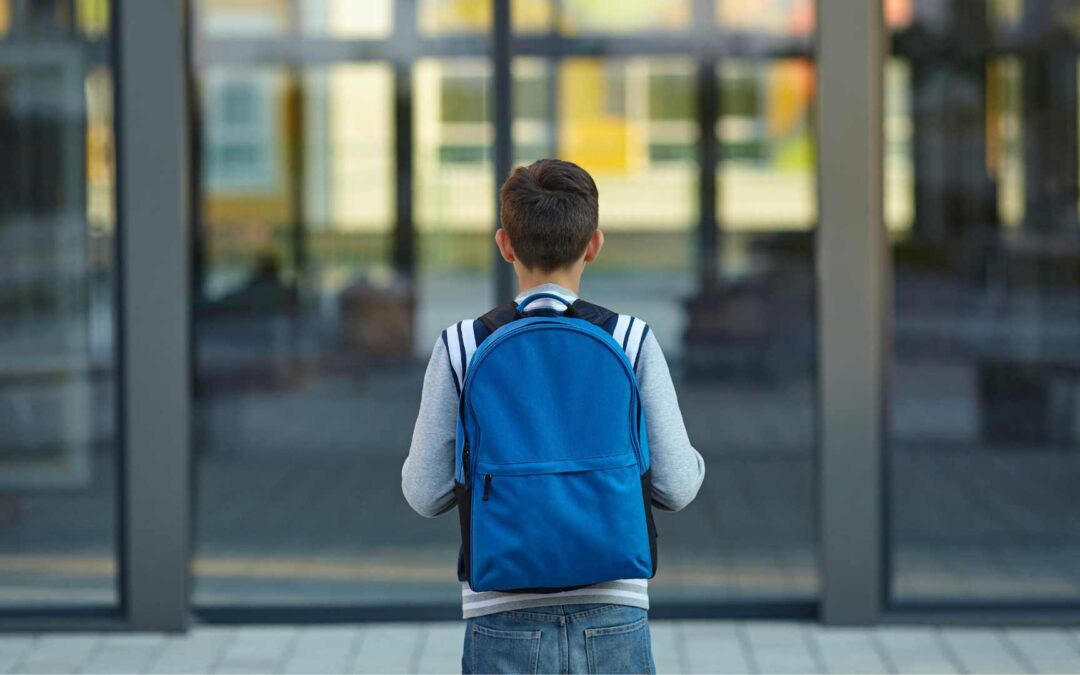When we hear the word ‘addiction,’ we often think of drugs and alcohol, but in the 21st century, addiction has taken on a new meaning. Lisa Elliott, Ph.D., psychologist and clinic manager of the Behavioral Health Clinic at Cook Children’s in Denton, says children are becoming addicted to their phones and gaming systems, driving parents to seek help through licensed therapists.
“We have the research that shows there is a chemical addiction as well as a behavioral addiction,” Dr. Elliott said.
“I think the thing that makes it even more dangerous for me is this is happening with young children, very young children, as much as it is with teens and young adults.”
In 2019, the World Health Organization (WHO), voted to include ‘gaming disorder’ as an official condition in the International Classification of Diseases, akin to anxiety, depression, etc. This paved the way for psychologists such as Dr. Elliott to bill insurance providers, making access to care more affordable for many families with health insurance. However, aside from video gaming, adolescents and teens are also glued to their electronic devices. She says remote learning due to the global pandemic has also played a major role in this addiction.
Cheryl, a North Texas mother, says her 12-year-old daughter is obsessed with YouTube. The family is now seeking guidance from a Cook Children’s family therapist.
Cheryl and her husband didn’t allow their daughter to have a cellphone until they believed she needed it for safety purposes. She wasn’t allowed to have any social media accounts, but her parents did allow her to watch TikTok videos.
“She has a cellphone and iPad, but we made sure everything had parental controls and restrictions,” Cheryl said.
When they later deleted the TikTok account out of concern for privacy issues, they allowed her to watch YouTube videos.
“She watches kids playing innocent pranks on each other, and she gets invested in that. She consistently talks about who is dating who and is always looking forward to the next update like she knows the people in the videos,” Cheryl explained.
Cheryl added that her daughter knew exactly when the episodes were coming out and had a fear of missing out on what was next in the lives of her favorite YouTubers.
When the Cheryl and her husband realized their daughter was going behind their back to find ways to watch YouTube, after she’d been instructed otherwise, they decided to reach out for help.
“For me, it was really about correcting that behavior because right now she has this temptation in front of her and she's making bad choices,” Cheryl explained.
Why are young people becoming obsessed with a reality outside of their own? Dr. Elliott believes the global pandemic has a lot to do with this rising trend.
“I think it's pervasive, so it's not just from an academic setting, but it's also how kids are filling their downtime. It's how they're maintaining social relationships, whether they're healthy or not,” Dr. Elliott said.
Cheryl and her husband couldn’t agree more. They don’t have any issues with their daughter’s choice of content. The issue is her actions and what these minor actions could lead to in the future when bigger temptation is put in front of her.
Cheryl’s daughter sees Stephanie Golden, LPC, a therapist at Cook Children’s Alliance. Golden has been working as a mental health professional for 20+ years but says phone and social media addiction is something she has seen more in the last three to four years in her practice. While phone addiction isn’t healthy, Golden believes it is treatable.
“It’s certainly a widespread problem, but I believe one that can be improved upon with boundaries,” Golden said.
Boundaries are exactly what Cheryl believes would be beneficial for her daughter when it comes to her desire to watch YouTube videos.
In a 2019 study released by the Child Mind Institute, 1% to 10% of children and adolescents have excessive and impairing online behavior. This behavior impacts a child’s ability to focus, the hours of sleep they get at night, and their social behavior with others when they aren’t behind a screen.
Cheryl says having a daughter that’s addicted to YouTube and going behind her parent’s back to find ways to watch it is hard because there aren’t resources for this problem specifically.
“It was really hard to figure out what to do and how to handle this,” Cheryl said. “We tried every single thing we could, from taking away her devices and even sitting down with her and asking her what she needed and how we could help.”
Cheryl and her husband struggled even more because they felt their daughter’s actions were ‘minor’ and ‘innocent’ because she wasn’t struggling with substance addiction. However, Dr. Elliot says addiction is handled the same whether it’s social media or something severe like drug use and gambling. She also notes until more research is done, therapists have to continue to rely on coping mechanisms and techniques they’ve used for adults who’ve struggled with addiction for many years. However, she says that it is scary because she doesn’t want to see adolescents fall into deeper temptation in the future.
“My concern is, if children are creating this addictive response, which we know happens, what kind of addictions does this lead into later?” Dr. Elliott asked. “So I'm concerned about the potential risk they might have for other addictions down the road.”
Cheryl and her husband also struggled with the guilt of putting their daughter in therapy because they didn’t want to take a seat of a child who might’ve needed the resources more.
“She isn’t suicidal and she isn’t depressed,” Cheryl said. “But I had to remind myself that we are putting her into counseling so she can learn skills and those skills can be applied to other areas of her life as well.”
Golden agrees with that sentiment and says in situations like this, she also gives guidance to families/parents.
“Set boundaries around cell phone usage and be consistent with the rules,” Golden said. “Following suggestions from experts can help protect a child’s mental health.”
Dr. Elliott adds another reason boundaries are important is that peer pressure and the need to fit in as at an all-time high. The Child Mind Institute reports 81% of teens say social media makes them feel more connected to their friends.
Cheryl agrees her daughter fits into that category.
“When we ask her why she wants it so bad or feels the need to sneak around to get what she wants, she tells us all of her friends in class are on YouTube all the time on their devices,” she said.
Dr. Elliott urges all parents to keep a very close eye on children’s social media and device use. She says not only can addiction to devices impact schoolwork, it can affect social relationships with others. When a child’s brain is still developing, she says children need healthy and appropriate social interactions to learn empathy, how to relate and communicate, as opposed to learning unhealthy social skills through a device/gaming system.
Cheryl understands the importance of limited screen time and says adolescents don’t fully understand phone etiquette, and how to properly interact with their peers and it is important to set an example and put boundaries into place at an early age.
As Chery’s daughter continues to see Golden, and the family works through this issue, Golden says it’s important to “face the issue with compassion, understanding and firm kindness.” She goes on to add “We don’t always like to have rules, but it’s often healthy and good for us when we follow them.”
Find more technology guidelines from Dr. Elliott shares with her patients from the American Association of Pediatrics below.
- Birth to Pre-School Years
- There should be no technology from birth to 3 years.
- Any screen time at this age impairs social communication, development, and attachment to family members.
- This age should be devoted to social development, sensory-motor skills, and reading skills.
- Limited exposure may be introduced at 4 years with only high-quality programming.
- American Academy of Pediatrics (AAP) cautions that all technology programs should be watched with their children.
- Parents have to lead by example: Do not check messages at the dinner table, do not become absorbed by devices, look at people when they are talking – children notice and mimic everything!
- Never undervalue unstructured “free play.”
- Parents should not give their children a tech device as a reward for good behavior. Children must learn to self-soothe.
- Appropriate activities for 4 year olds
- Periodically use eReader for storytime.
- Allow limited access to electronic toys that educate and teach numbers, letters, and vowel sounds.
- Utilize mobile apps/tech devices for sorting shapes and finding objects.
- It is critical children engage in physical play, have social engagements and read books!
- Grade School Age Years
- Create a balance between technology, along with social and physical play.
- AAP recommends no more than two hours of screen time per day with close parental supervision! And that should be less during the younger grade school ages.
- It is critical to watch alongside your kids to point out messages that are not congruent to your values.
- Parents need to designate media-free spaces, including bedrooms, meal times, and playtimes.
- Screen time should be quality; age-appropriate, share your values, and engage your child’s imagination.
- Never make screens a reward or consequence.
- Encourage other activities such as free play outside, playing sports, creating hobbies, arts and crafts, and social activities.
- Appropriate activities for grade school
- The goal is to teach responsible use.
- Use internet under supervision only.
- Create tech-free talk each day.
- Institute strict time limit restrictions and rules for use.
- Monitor computer homework; eliminate all technology when screen time rules are broken.
- Children need to stay involved with school activities and friends.
- Model appropriate technology behavior
- Preteen and Teen Years
- It is critical parents model appropriate technology behavior – they have to practice what they preach.
- Parents need to establish the rule that their children will agree to “friending” them on social media platforms.
- Parents should have access to passwords.
- Maintain open dialogue about what is and is not appropriate sharing on social media platforms.
- Parents and their tween/teens should develop a social media contract that includes expectations, violations as well as discipline for violations. Try out this great free tool from @AmerAcadPeds: http://www.healthychildren.org/MediaUsePlan
- Bedrooms should be tech-free, all devices should be removed from bedrooms at night.
- Snapchat is the most difficult platform to monitor – may be wise not to allow this platform.
- It is imperative to teach your children about the potential consequences of their postings on social media platforms.
About the Joy Campaign
Cook Children's Joy Campaign is a communication initiative that aims to encourage hope and resilience among children and teens.
Joy stands for: Just breathe. Open up. You matter.
The number of children and teens suffering from anxiety, stress and depression is skyrocketing. Sadly, Cook Children's has seen a record number of patients attempting suicide in the past year. The Joy Campaign is a suicide prevention communication initiative led by Cook Children's to bring hope and needed resources to children and families facing struggles and dark times in their lives.
Learn more about the Joy Campaign and available mental health resources here.












